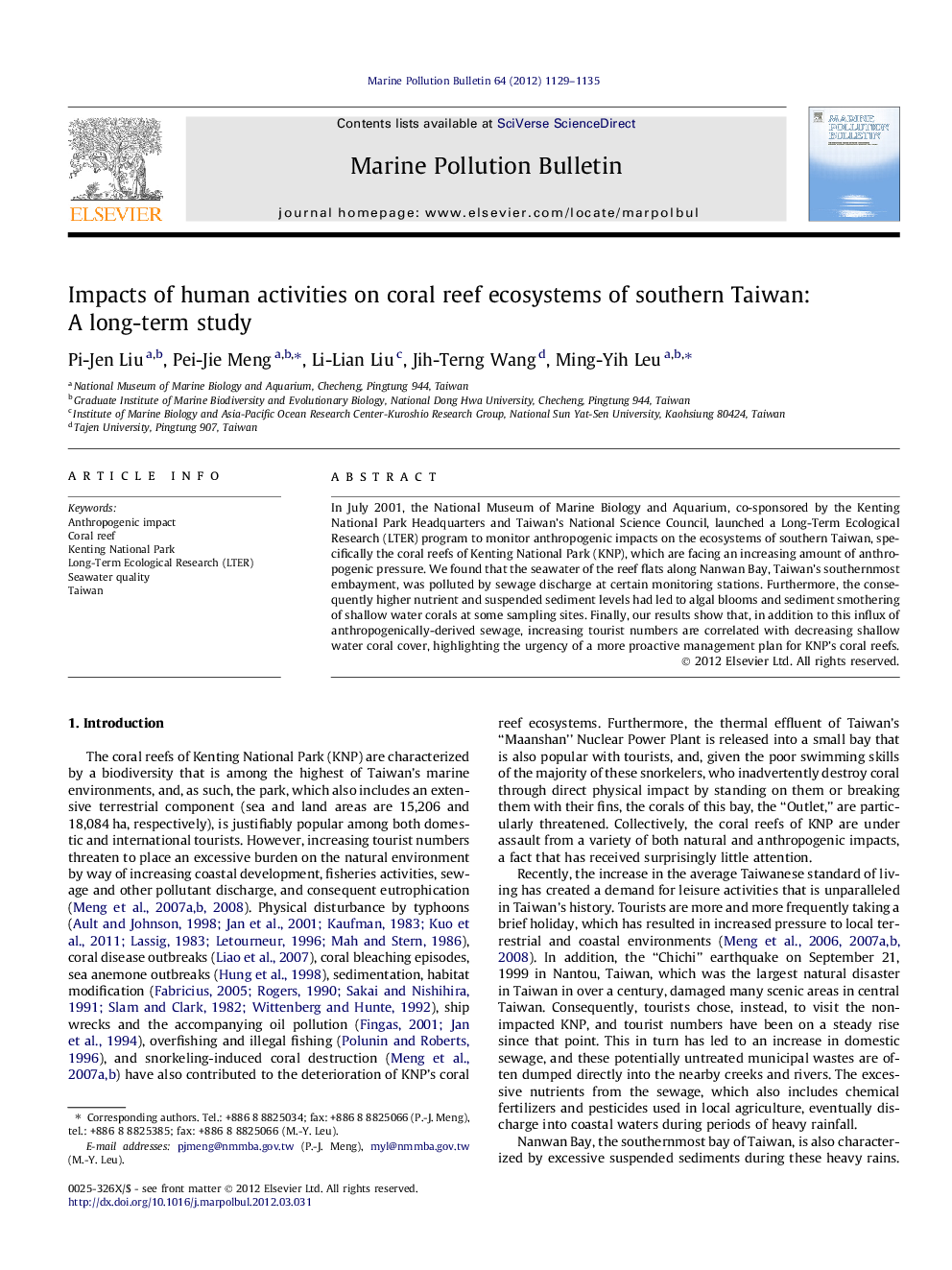| Article ID | Journal | Published Year | Pages | File Type |
|---|---|---|---|---|
| 6360409 | Marine Pollution Bulletin | 2012 | 7 Pages |
In July 2001, the National Museum of Marine Biology and Aquarium, co-sponsored by the Kenting National Park Headquarters and Taiwan's National Science Council, launched a Long-Term Ecological Research (LTER) program to monitor anthropogenic impacts on the ecosystems of southern Taiwan, specifically the coral reefs of Kenting National Park (KNP), which are facing an increasing amount of anthropogenic pressure. We found that the seawater of the reef flats along Nanwan Bay, Taiwan's southernmost embayment, was polluted by sewage discharge at certain monitoring stations. Furthermore, the consequently higher nutrient and suspended sediment levels had led to algal blooms and sediment smothering of shallow water corals at some sampling sites. Finally, our results show that, in addition to this influx of anthropogenically-derived sewage, increasing tourist numbers are correlated with decreasing shallow water coral cover, highlighting the urgency of a more proactive management plan for KNP's coral reefs.
⺠Fringing reefs are located near the coast and readily influenced by human. ⺠Tourists produce a great deal of sewage, which can migrate to coastal waters. ⺠Turbid, nutrients have led to increases in algal cover in shallow areas. ⺠Increasing tourists, turbidity, and nutrients have led to declines in coral cover.
